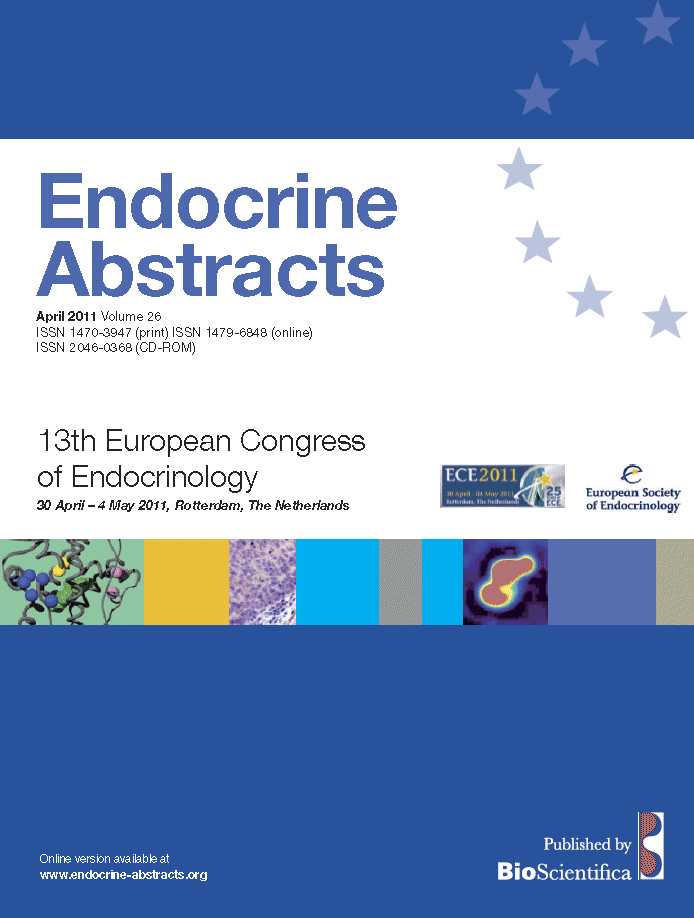Searchable abstracts of presentations at key conferences in endocrinology
Symposia
Molecular mechanisms in neuroendocrine tumours
ea0026s3.1 | Molecular mechanisms in neuroendocrine tumours | ECE2011
Somatostatin and dopamine signalling in neuroendocrine tumours
The discovery of the new properties of somatostatin (SSTRs) and dopamine (DRs) receptors has led to a renewed interest in agents targeting these receptors, and has opened new perspectives for medical treatment of patients with neuroendocrine tumors (NETs). Indeed, patients unresponsive or resistant to the classical, currently available somatostatin analogs may benefit from these insights. Moreover, SSRs and DRs crosstalk at membrane level may trigger alternative in...
ea0026s3.2 | Molecular mechanisms in neuroendocrine tumours | ECE2011
A new truncated variant of somatostatin receptor subtype five, sst5TMD4, is present in pituitary tumours and breast cancer, and impairs the normal response to somatostatin
Castano Justo P , Gahete Manuel D , Cordoba-Chacon Jose , Martinez-Fuentes Antonio J , Lopez-Sanchez Laura M , Gracia-Navarro Francisco , Luque Raul M
Somatostatin receptors (sst1sst5) comprise a family of G-protein-coupled, 7 transmembrane domain (TMD) receptors encoded by five separate, intronless genes widely distributed throughout the organism. Somatostatin (SST) and cortistatin (CORT), two highly-related cyclic neuropeptides, bind to sst1sst5 with comparable subnanomolar affinity to exert a number of (patho)physiological actions, from inhibition of endocrine secretions (e.g. GH and insulin), to the control o...
ea0026s3.3 | Molecular mechanisms in neuroendocrine tumours | ECE2011
Lessons from MENX
MENX is a recently identified multiple endocrine neoplasia (MEN) syndrome in the rat. Affected animals develop multiple neuroendocrine tumors (NETs) with high penetrance and at young age, specifically: bilateral pheochromocytoma (100%), multifocal pituitary adenoma (100%), multifocal thyroid C-cell hyperplasia, parathyroid hyperplasia, extra-adrenal pheochromocytoma (paragangliomas) and pancreatic islet cell hyperplasia. MENX is caused by a germline frameshift mutation of the ...




